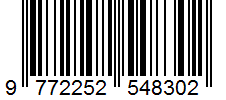Norma Sosial dan Kepatuhan Pajak
DOI:
https://doi.org/10.54131/jbma.v11i2.205Keywords:
Tax Compliace, Descriptive Norm, Injunctive Norm, Subjective Norm, Personal NormAbstract
The purpose of this study is to explore the role of social norms in tax compliance in Indonesia. This study draws on Cialdini & Trost, (1998), taxonomy of social norms to descriptive norms, injunctive norm, subjective norm and personal norm. Hypotheses this study is regarding the direct and indirect influences of social norms. This study use 128 participants, the participants are college students who took courses in taxation dan SMEs management and they had business activities. The hypotheses testing in this study used SEM (Structural Equation Modeling). The SEM analysis tool used SEM PLA (Partial Least Squares) WarpPLS 7.0. Result of the path analysis show that descriptive norm, injunctive norm, subjective norm each have a direct influence on tax compliance. Descriptive norms are indirectly influence to tax compliance through injunctive norm and subjective norm. Subjective norm direct influence but not indirect influence on tax compliance. personal norm are not directly influence to tax compliance
References
Andreoni, J., Erard, B., & Feinstein, J. (1998). Tax Compliance. Journal of Economic Literature, 36(2), 818–860.
Ann Klein, K. (2005). Subjective, Descriptive, And Injunctive Norms: Three Separate Constructs. In Michigan State University. https://doi.org/10.1017/S0165115300023299
Benk, B., Calmak, & Serkan. (2012). TAX PROFESSIONALS’ PERCEPTIONS OF TAX FAIRNESS: SURVEY EVIDENCE IN TURKEY. 3(2), 112–118.
Bhutta, Z. M., Tara, N., Rasheed, R., & Khan, A. B. (2019). Psychological Factors Affecting Tax Compliance Behavior of Pakistani Tax Payer: An Extended Theory of Planned Behavior Perspective. Pakistan Journal of Social Sciences (PJSS);, Vol. 39(Issue 4), p1453-1464. http://e-resources.perpusnas.go.id:2048/login?url=https://search.ebscohost.com/login.aspx?direct=true&db=edo&AN=142348205&site=eds-live
Bicchieri. (2006). The Grammar of Society The Nature and Dynamics of Social Norms. In Cambridge University Press.
Blanthorne, C., & Kaplan, S. (2008). An egocentric model of the relations among the opportunity to underreport, social norms, ethical beliefs, and underreporting behavior. Accounting, Organizations and Society, 33(7–8), 684–703. https://doi.org/10.1016/j.aos.2008.02.001
Bobek, D. D., Hageman, A. M., & Kelliher, C. F. (2013). Analyzing the Role of Social Norms in Tax Compliance Behavior. Journal of Business Ethics, 115(3), 451–468. https://doi.org/10.1007/s10551-012-1390-7
Bobek, D. D., Roberts, R. W., & Sweeney, J. T. (2007). The social norms of tax compliance: Evidence from Australia, Singapore, and the United States. Journal of Business Ethics, 74(1), 49–64. https://doi.org/10.1007/s10551-006-9219-x
Bps.go.id. (2024). Realisasi Pendapatan Negara, 2022-2024. In Bps.go.id. https://www.bps.go.id/statistics-table/2/MTA3MCMy/realisasi-pendapatan-negara.html
Budiningrum, E. W. (2019). Pengaruh Norma-Norma Sosial Terhadap Perilaku Kepatuhan Pajak Usaha Mikro, Kecil Dan Menengah (Umkm). Albama, 12(1), 22–36.
Cialdini, & Trost. (1998). Social Influence: Social Norms. Conformity, and Compliance.
Cislaghi, B., & Heise, L. (2020). Gender norms and social norms: differences, similarities and why they matter in prevention science. Sociology of Health and Illness, 42(2), 407–422. https://doi.org/10.1111/1467-9566.13008
Davis, J. S., Hecht, G., & Perkins, J. D. (2003). Behaviors , Enforcement , Compliance Dynamics. The Accounting Review, 78(1), 39–69.
Hallsworth, M., List, J. A., Metcalfe, R. D., & Vlaev, I. (2017). The behavioralist as tax collector: Using natural field experiments to enhance tax compliance. Journal of Public Economics, 148, 14–31. https://doi.org/https://doi.org/10.1016/j.jpubeco.2017.02.003
Hunt, N. C., & Iyer, G. S. (2018). The effect of tax position and personal norms: An analysis of taxpayer compliance decisions using paper and software. Advances in Accounting, Vol. 41, p1-6, 6p. https://doi.org/10.1016/j.adiac.2018.02.003
Jogiyanto, H. (2011). Konsep Dan Aplikasi Structural Equation Modeling : Berbasis Varian Dalam Penelitian Bisnis. Yogyakarta : UPP STIM YKPN.
Kementerian Keuangan. (2023). Undang-undang (UU) Nomor 19 tahun 2023 tentang Anggaran Pendapatan dan Belanja Negara (APBN) Tahun Anggaran 2024. 189673, 48.
Klein, K. A., & Boster, F. J. (2005). Subjective, Descriptive, and Injunctive Norms. 517, 1–41.
Kostritsa, M., & Sittler, I. (2017). The Impact of Social Norms, Trust, and Fairness on Voluntary Tax Compliance in Austria. Management, 12(4), 333–353. https://doi.org/10.26493/1854-4231.12.333-353
Kuokštis, V. (2017). Economic conditions and tax compliance: the mediating effect of trust. Journal of Comparative Politics, 10(2), 55–69.
Manning, M. (2009). Relative Influence Of Descriptive And Injunctive Norms On Behavioral Intentions A Dissertation Presented by MARK MANNING Submitted to the Graduate School of the University of Massachusetts Amherst in partial fulfillment of the requirements for the degree. May.
Mardiasmo. (2019). Perpajakan. Penerbit Andi Yogyakarta.
Nam, K. D., & Minh, N. T. B. (2021). Determinants affecting tax compliance: A case of business households in Ho Chi Minh City, Vietnam. Economics and Business Administration, 11(1), 136–152. https://doi.org/10.46223/hcmcoujs.econ.en.11.1.984.2021
Neuberger, L., Lapinski, M. K., & Maloney, E. K. (2013). Predicting land use voting behavior: expanding our understanding of the influence of attitudes and social norms. Journal of Applied Social Psychology, 43, 2377–2390. https://doi.org/edsair.doi...........64b20c1f1fc9ced6e61454ad0fb1bcea
Putri, Y. N. (2021). The Effect Of Social Norms On Tax Payer Compliance Behavior. Accounting and Finance Studies, 1(1), 64–78. www.liputan6.com
Rhodes, N., Shulman, H. C., & McClaran, N. (2020). Changing norms: A meta-analytic integration of research on social norms appeals. Human Communication Research, 46(2–3), 161–191. https://doi.org/10.1093/hcr/hqz023
Sholihin, M., & Ratmono, D. (2013). Analisis SEM-PLS Dengan WarpPLS 3.0 : Untuk Hubungan Nonlinier Dalam Penelitian Sosial (Seno (ed.)). Yogyakatra : Andi Offset.
Smith & McSweeney, J. R. A. (2007). Charitable Giving: The Effectiveness of a Revised Theory of Planned Behaviour Model in Predicting Donating Intentions and Behaviour. Journal of Community & Applied Social Psychology, 17(July 2007), 363–386. https://doi.org/10.1002/casp
Sunstein, C. R. (1996). Social norms and social roles. Columbia Law Review, 96(4), 903. https://doi.org/10.2307/1123430
Thøgersen, J. (2008). Social norms and cooperation in real-life social dilemmas. Journal of Economic Psychology, 29(4), 458–472. https://doi.org/10.1016/j.joep.2007.12.004
Trivedi, V. U., Shehata, M., & Lynn, B. (2003). Impact of Personal and Situational Factors on Taxpayer Compliance: An Experimental Analysis. Journal of Business Ethics, 47(3), 175–197. https://doi.org/10.1023/A:1026294332606
Undang-Undang Nomor 7 Tahun 2021. (2021). Undang-Undang Nomor 7 Tahun 2021 Tentang Harmonisasi Peraturan Perpajakan. 1–6.
Wenzel, M. (2004). An analysis of norm processes in tax compliance. Journal of Economic Psychology, 25(2), 213–228. https://doi.org/10.1016/S0167-4870(02)00168-X
White, K. M., Smith, J. R., Terry, D. J., Greenslade, J. H., & McKimmie, B. M. (2009). Social influence in the theory of planned behaviour: The role of descriptive, injunctive, and in-group norms. British Journal of Social Psychology, 48(1), 135–158. https://doi.org/10.1348/014466608X295207
Downloads
Published
Issue
Section
License
Copyright (c) 2024 Endah Wening Budiningrum

This work is licensed under a Creative Commons Attribution-NonCommercial-NoDerivatives 4.0 International License.



















